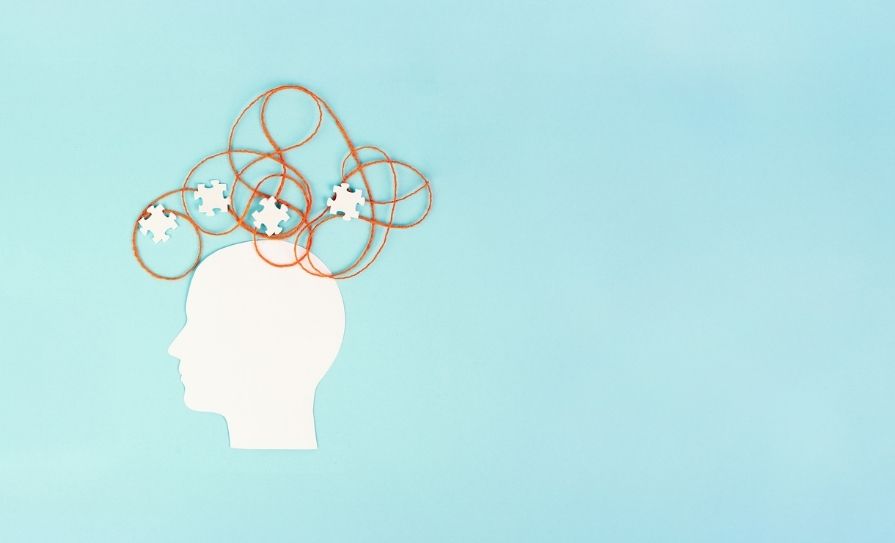We look at prostate cancer, its impact, the rising incidence and the range of treatment currently available
According to the National Cancer Control Programme (NCCP), prostate cancer is the most common invasive cancer diagnosed in men in Ireland (excluding non-melanoma skin cancer). It’s quite likely that, as a health professional at the frontline in community pharmacy, you have or know of patients who have been diagnosed with prostate cancer and are either awaiting treatment or have had treatment in the past. You most likely have been involved in their care at some stage in the process.
What you don’t know is the condition of the prostate in the next man over 50 you meet at the pharmacy counter — and evidence suggests that neither does he. The purpose of this article is to give an insight into prostate cancer, its diagnosis and the absolute importance of early diagnosis in relation to long-term survivability
and a return to a relatively normal life postsuccessful treatment. Here we follow the typical journey a man would take from first symptoms, through diagnosis, treatment and beyond. The information here aims to help empower and consider engaging proactively with your male patients over 50 and helping them see the benefit of getting a quick fivesecond prostate check (yes — just five seconds!) when they next visit the GP. We know how ‘GP-averse’ men can be, with many taking the attitude of, ‘there’s nothing wrong with me, I’m fine’.
However, this needs to be tackled head-on and men who believe they are well need to develop an understanding of ‘now that I’m over 50, how do I stay well — what few changes can I make ensure I understand my health?’
Increasing numbers being diagnosed
Unlike some other cancers, especially breast, cervix or bowel, there is no national screening programme for prostate cancer, as there is nothing ‘specific’ to screen for, meaning it is even more important that men are aware of the need to get themselves checked. Ireland has one of the highest incidences of prostate cancer in Europe, with just under 4,000 men diagnosed with prostate cancer each year — so, close to 11 a day. This sounds like a high number when you consider that the figure for 1997 was 1,097. Why the seemingly massive increase?
The higher number is a good thing and is simply down to an increased awareness of the disease and improved pathways in identifying and treating the condition. It is likely that the actual numbers haven’t increased by a huge margin; we just find more cases. Men are living longer too, with life expectancy in men in Ireland increasing from 74 in the year 2000, to 84.1 in 2018, which means more cases of prostatencancer as incidence increases with age.
In more recent years, the availability of PSA (prostate-specific antigen) testing has meant a greater than five-fold increase in test numbers, meaning increased diagnoses. An NCCP-defined GP rapid referral system has also increased recorded case numbers. The most positive benefit of identifying prostate cancer earlier is that survivability rates of 10 years-plus are now almost 95 per cent for those diagnosed early enough to be ‘low-risk’, thereby enabling increased successful treatment outcomes. As little as 25 years ago, the survivability rate was as low as 69 per cent.
Men in Ireland have a one-in-six likelihood of getting prostate cancer at some point in their life. Only 1 per cent of men diagnosed are under 50, with over 80 per cent being over It is, in the main, an age-related disease.
What is the prostate and what does it do?
The prostate gland is a small, walnut-sized gland weighing about 30 grams and is situated beneath the bladder. The urethra, the tube that conduits urine from the bladder to the penis, passes through the prostate, bisecting it into two lobes. A healthy prostate is soft and smooth to the touch.
The prostate helps with hormone production and in controlling urination. Its most important function, however, is the production of seminal fluid, which helps and protects the smooth transit of sperm. The proximity of the rectum to the prostate enables the surface of the prostate to be felt and examined internally by the GP. The prostate surrounds the urethra and a thin membrane surrounds and contains the prostate. This has relevance later when considering symptoms.
Risk factors and causes
There is no definitive answer, as the exact cause is unknown. Cancer cells in the prostate are relatively common in older men, however, this doesn’t necessarily mean that they will develop into a tumour. In early-stage prostate cancer there may be no symptoms, so it can be extremely difficult to establish if cancer is present.
There are certain risk factors which may increase the likelihood of developing prostate cancer — however, it’s worth noting that these risk factors are only a guide; not everyone with a risk factor will develop cancer and the reverse is true; you may develop prostate cancer without being in an ‘at-risk’ group.
Here are the most common risk factors in no particular order:
Age:
Perhaps the most significant risk factor, as the risk of prostate cancer increases with age. Over 60 per cent of prostate cancer diagnoses are in men over 65. As mentioned earlier, only 1 per cent of diagnoses are aged under 50.
Familial link:
There is some evidence to suggest that if a man has had a brother or father who had prostate cancer, their
chance of getting the disease may be up to 2.5 times greater than a man with no relative family history. Risk is also increased if that relative’s diagnosis was at a younger age, ie, 45-to-60.
Genes:
In women, a mutated BRCA1 or 2 gene can increase their risk of breast and ovarian cancer. The BRCA genes are also present in men and in the same way, a mutated gene can increase the risk of developing both prostate
and, rarely, breast cancer. Men can also pass this gene on to their children.
Ethnicity:
For reasons yet unknown, both Afro-Caribbean and African American ethnic groups have a much higher risk of developing prostate cancer.
Diet:
Whilst there is no substantive link to show that consumption of specific foods is linked to prostate cancer, a more general observation would be that record levels of obesity in our society caused through poor dietary choices and lack of exercise increase the chances of developing any cancer, not just prostate.
Symptoms
The size of the prostate in most men will increase as they get older; the reasons for this are not entirely known, however it is generally thought to relate to changes in the balance of sex hormone (particularly testosterone) as men age.
Benign prostatic hyperplasia (BPH) is a non-cancerous enlargement of the prostate gland and is the most common male benign tumour. It effects men on a rising scale from around 33 per cent at over 50, to 90 per cent by age 85.
An enlarged prostate causes urine flow restrictions from the bladder which, if left untreated, can lead to complications in the urinary tract, bladder, and kidneys.
As mentioned, the prostate is encased in an outer membrane. The urethra passes through the prostate, which means as the prostate enlarges, its growth is restricted from the outside by this surrounding capsule. This then forces the two lobes of the prostate to squeeze together, constricting the urethra and causing urine flow restriction.
If we consider the most commons symptoms of BPH (outlined below), these are virtually identical to symptoms that may be caused by the presence of cancer in the prostate. The cancerous tumour, depending on its location in the prostate, can press on the urethra, causing similar symptoms to BPH. It is important to remember that for early-stage prostate cancer, there may be no symptoms, meaning age-related health checks are vitally important.
Irritative symptoms
Increased frequency in urination both day and night (nocturia).
Inability to ‘hold on’, resulting in leakage (urge incontinence).
Leakage when coughing, sneezing, lifting, etc (stress incontinence).
Difficulty initiating urination, despite urgency.
Not voiding bladder completely —retention.
Obstructive symptoms
Stop-start stream.
Poor flow and straining to pass urine.
Continued ‘dribbling’ when finished.
Other less-common symptoms relating.
more to prostate cancer specifically:
Presence of blood in the semen or urine.
Painful urination.
If any of these symptoms are present, pointing a patient to an immediate appointment with the GP to determine the cause is the most important first step. Many men put these symptoms down to ‘just getting older’ and do not want to ‘bother the doctor’. It is a proven fact that if any of the symptoms are present, there is never an early enough time to get them checked, so encouraging a visit to the GP is recommended.
Diagnosis
Attending the GP can be daunting; however, this is the essential first stage in the process of identifying the problem and then making the right decisions based on findings. Once the patient has outlined their symptoms, this should lead the doctor to consider two actions to help determine the next stage.
Digital rectal examination (DRE)
This is where the doctor inserts a gloved, lubricated finger into the rectum to feel the prostate through the rectum wall. Through training and experience, they can ascertain the size and feel of the prostate and identify anything ‘irregular’. A patient may experience a small level of discomfort with this procedure; however, it is painless and quick, generally around five or six seconds.
PSA Blood test
In addition to the DRE and considering factors such as age and symptoms, the doctor will ask for a PSA blood test. PSA is a protein produced by cells in the prostate. If there is cancer present, this may result in a higher PSA level. This blood test is not a test for cancer, as there are many factors which can contribute to PSA levels (including BPH) at any time.
It will establish a baseline measurement for that person on the day of the test. Ideally, a further test four-to-six weeks later will give an indication as to the extent of any difference in readings. PSA results can vary from person-to-person and there isn’t really a correlation that means a person with a high score has cancer or, conversely, a lower score means no cancer. It’s down to consistency. For example, a ‘healthy’ man should have a PSA score of less than 4.
For example, if a man has a score of 2 and after three further tests also returns a PSA score of 2 each time, but then if the next score jumps to 4.5, this large jump would trigger concern and warrant further investigation, rather than the number itself.
The blood results generally come through quickly, at which point a further discussion with the GP will be necessary. Based on findings, the GP will decide on a course of action.
If BPH is suspected, then a course of treatment will be recommended. If PSA readings are ‘normal’, then the doctor will probably suggest further test appointments over 6-to12-month intervals, whilst treating the urinary symptoms in the meantime.
The blood results
generally come through
quickly, at which point a
further discussion with
the GP will be necessary
If, however, prostate cancer is suspected, there is a specific pathway defined by the NCCP to the GP for referral to a consultant urologist via the Rapid-Access Prostate Clinic programme at one of the eight regional designated cancer centres (four in Dublin, one each in Cork, Galway, Limerick, and Waterford — also satellites in Tallaght and Letterkenny).
Following GP referral, the patient will receive a letter inviting them to attend the urology clinic at whatever site is designated for their area. The consultant will review symptoms and conduct a further DRE to support GP findings. If they concur and suspect that cancer is present, they will generally request an MRI scan, followed by a biopsy.
The MRI can be carried out using public health services, however, it can take quite a while to get a space. Private MRI pelvic scans can be sourced for around €200- €250 and can be performed quickly to suit the individual. Once completed, the MRI results are sent to the urology consultant.
In the interim, the patient will receive a date to attend a day clinic at the hospital to have their biopsy. The purpose of the biopsy is to take 10-to-12 cell samples from the prostate, which are then examined under a microscope to verify or eliminate the presence of cancer. This process takes half a day and can be quite uncomfortable for the 24 hours following the procedure. The patient is given a supply of antibiotics to take over the ensuing 48 hours to help minimise the risk of infection.
Following the biopsy, the patient will receive a further invitation to attend the urology consultant’s clinic to discuss the biopsy/MRI results — generally four-to-six weeks later.
Staging and grading
If cancer is present, based on the results, the consultant will have established the size, development, and risk level of the cancer.
Staging determined by the MRI looks at the size (T), followed by four levels indicating whether the cancer is contained within the prostate or has broken through and spread outside the gland. Then (N) determines whether cancer is in the lymph nodes, and metastasis (M) indicates spread to other organs /nodes.
For example, early prostate cancer contained within the prostate would be T1 or 2, N0, M0.
For grading, a score is given to the biopsy cell samples, called a Gleason score, based on a pathology assessment of how the cells in the sample appear normal vs abnormal. The score is from 3-to-5; the lower the score, the healthier the cells. Using the most common and the next-most common scores gives a single-figure score. For example, 3 + 4 = Gleason score of 7.
The results above, along with the PSA level, enable the urologist to classify the risk group, which has a bearing on which treatment options are most suited to the patient. The four risk groups range from ‘Low’ to ‘Very High’.
So, ‘Intermediate Risk’ would look like T2b-T2c, or Gleason score = 7 or PSA 10-20?g/L.
With the above taken into consideration, the patient is then allocated a risk group scaled 1-to-5, with 1 being the best outlook and 5 describing cancers that have spread and are growing quickly. For the example above, the patient would be in risk Group 2.
Based then on the risk group, the consultant will present the treatment options most appropriate based on the diagnosis and likely prognosis.
Treatment Depending on the risk group, there is a choice of treatments. For some low- and almost all intermediate-risk groups, the treatment goal would be to get rid of the cancer completely. If that is not an option, perhaps in a case where the cancer has spread, treatment goals may be to manage the cancer or slow its growth. Below is a summary of treatment options. Many of these are quite complex therapies, which could support a separate article on their own; for this article, I will give a quick summary.
Active surveillance
Most suited to low-risk or early localised prostate cancer which may be extremely passive and not impacting hugely on quality of life. Choosing this method avoids any treatment related side-effects. This treatment choice involves regular testing, such as MRIs, repeat biopsies, blood tests that monitor key numbers and reflect any adverse changes in the cancer. If there is no change, this process can be continued for many years. This means the patient is ideally placed for immediate action, should the need arise.
Brachytherapy
The goal of this treatment is to completely eradicate the cancer via the insertion of minute radioactive seeds directly into the prostate. For higher-risk categories, this treatment can be used in conjunction with other treatments. The seeds are effective over several months. The main potential benefit is that the patient can resume normal activities, as there are fewer side-effects than other forms of radiotherapy.
External beam radiotherapy
This treatment uses x-rays to destroy cancer cells whilst leaving normal cells intact. It is only suitable where the cancer is contained within or on the margins of the prostate, meaning it is suitable for intermediate risk or locally-advanced cancer. Duration of treatment can be over days or even weeks, dependent of the size and location of the cancer.
Some of the negative aspects of this treatment are that the patient may have to travel to get treatment and with radiotherapy, it may not be possible to have cancer surgery immediately should the need arise.
Surgery
The surgical option removes the entire prostate gland through a radical prostatectomy. The size and location of the cancer will determine two options available. For localised cancer that is contained within the prostate, keyhole or robot-assisted keyhole surgery is the choice, ie, those with intermediate risk. If the cancer has spread outside of the prostate, keyhole is not an option, with open surgery being the only choice. The advantage of robotic or keyhole surgery is that time in hospital is greatly reduced, in addition to a much lower risk of wound infection. Some of the disadvantages of surgery are potential urinary and erectile issues, however these can be addressed and successfully countered should the need arise. With the removal of the prostate, fathering children is no longer possible.
Hormone therapy
Male sex hormones can promote the growth of prostate cancer cells; the goal of hormone therapy is to minimise or prevent this growth process. This is achieved through medication which can stop the body making the components required to produce testosterone, such as Degarelix, Goserelin, Histrelin, Leuprolide or to stop making or receiving androgens (ie, Bicalutamide, Nilutamide, Flutamide Abiraterone acetate, Apalutamide, Enzalutamide) and thereby starving the cancer cells of growth potential.
Hormone therapy has proven effective in helping those with advanced prostate cancer where surgery and radiotherapy are not an option to manage their condition through medication.
Watchful waiting
This is generally a treatment option for low-risk groups that may, due to other health issues, be unsuitable for the options listed above. In many ways, the ethos is similar to ‘Active Surveillance’, however the only testing is regular PSA testing and perhaps an annual DRE. Symptoms continue to be monitored. If symptoms develop or PSA rises to concerning levels, there is immediate access to urology consultant and support.
Treatments on the horizon
Potential treatments that are not yet approved for use in Ireland for prostate cancer include:
Immunotherapy — whilst currently approved for use in fighting melanoma, immunotherapy is not available for general treatment of prostate cancer. There are clinical trials for Pembro (Pembrolizumab), which started in June 2019, of which initialindications are positive.
Focal therapy — approved for use in the US and the UK, Focal therapies such as HIFU (High-Intensity Focused Ultrasound) and cryotherapy are not yet approved for use in Ireland. Evidence suggests that results from these therapies are no better than those achieved using existing methods.
Summary
As emphasised throughout this article, the key to increasing the number of successful outcomes for prostate cancer is early diagnosis, and this then offers the widest choice in terms of treatment options.
Hopefully it has presented sufficient information to enable you to engage with your male customers and patients as part of a wider ‘well man’ approach. Anything you can do to promote early health checkups for even the healthiest of men over 50 will not be wasted.
References available upon request
Contributor information

Written and researched by
Eamonn Brady (MPSI), owner of
Whelehans Pharmacies in Mullingar
Tel 04493 34591 (Pearse St) or
04493 10266 (Clonmore). www.
whelehans.inet. Eamonn specialises in
the supply of medicines and training
needs of nursing homes throughout
Ireland. Email ebrady@whelehans.ie







